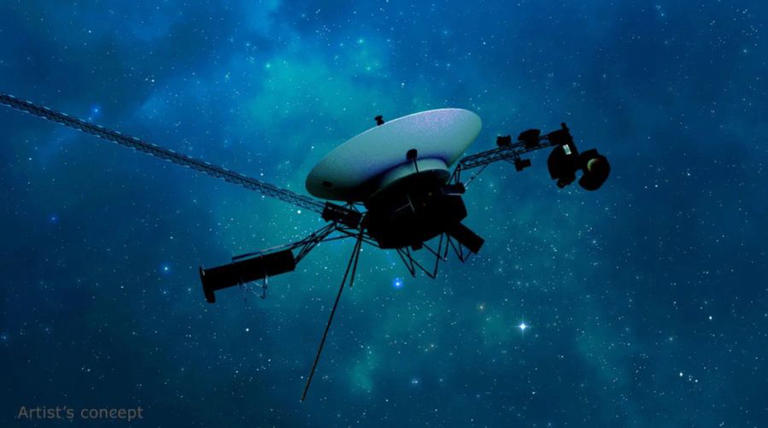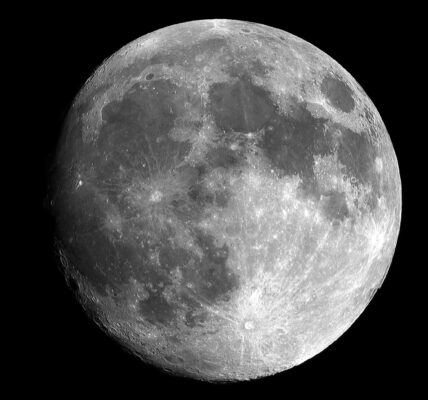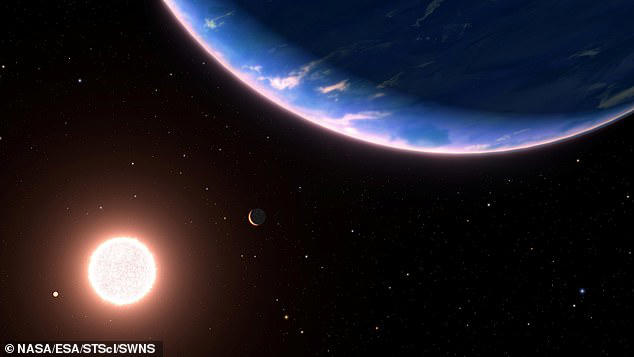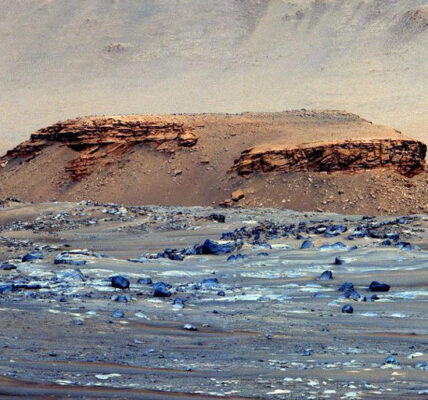Voyager 1 Communication Re-established: NASA’s 47-Year-Old Spacecraft Connects Using 1981 Radio Transmitter
Voyager 1 communication re-established with Earth using a 1981 radio transmitter after a technical disruption. NASA’s team creatively solved the issue to keep the spacecraft’s mission on track.
In an impressive feat of engineering and resilience, Voyager 1 communication was re-established after a temporary disruption. Launched in 1977, the Voyager 1 spacecraft is the most distant human-made object, currently traveling more than 15 billion miles from Earth. Despite its age and the wear on its systems, Voyager 1 continues to send back valuable data from interstellar space, providing insights into regions beyond our solar system. The recent communication restoration, achieved using a backup radio transmitter from 1981, is yet another milestone in Voyager 1’s extraordinary journey.

© JPL-Caltech, NASA
A 47-Year Journey Continues with New Challenges
Voyager 1’s journey started on September 5, 1977, when it was launched by NASA to study the outer planets. After completing its primary mission of exploring Jupiter and Saturn, Voyager 1 continued onward, venturing into interstellar space in 2012. Its longevity has been remarkable, but the spacecraft faces continuous challenges due to its age. To conserve power and keep it functioning as long as possible, engineers have turned off non-essential systems, preserving its ability to send back data.
The re-establishment of Voyager 1 communication became essential when an unexpected technical issue on October 18, 2024, disrupted its link with NASA’s Deep Space Network. After some creative problem-solving, NASA’s engineers managed to restore contact using an older, less powerful S-band radio transmitter that hasn’t been used since 1981.
The Technical Glitch Behind Voyager 1’s Communication Disruption
On October 16, 2024, the Voyager 1 team sent a command to activate a heater on the spacecraft. The heater’s purpose was to reverse some of the radiation damage Voyager 1 had sustained over its decades-long journey through space. However, this command inadvertently triggered the spacecraft’s autonomous fault protection system. This system, designed to protect Voyager 1 by conserving power when it senses unusual behavior, shut down some non-essential components, including the X-band radio transmitter used for communication.
NASA only discovered the issue two days later, on October 18, when the Deep Space Network (DSN), NASA’s global radio telescope network used to communicate with distant spacecraft, failed to detect a response from Voyager 1.
Turning to an Old Solution: Reconnecting with the 1981 S-band Transmitter
Faced with this unexpected communication breakdown, NASA’s engineers decided to try reactivating the spacecraft’s older S-band transmitter, a technology Voyager 1 hasn’t relied on in over four decades. The S-band operates on a different frequency and transmits weaker signals than the X-band, but NASA hoped it might provide a temporary solution to re-establish communication.
The Deep Space Network successfully detected the S-band signal, enabling NASA’s team to confirm that Voyager 1 was still aligned with Earth. This initial success was crucial, as it meant they could send basic commands to Voyager 1 and potentially bring it back online for regular data transmission. Although the S-band signal is too weak to send scientific data or detailed health telemetry, it offers a vital lifeline, allowing the mission team to maintain minimal communication with Voyager 1 while they troubleshoot the fault protection system.
NASA’s Creative Problem-Solving Keeps Voyager 1 on Course
This recent success in restoring Voyager 1 communication is a testament to NASA’s ingenuity and adaptability. Despite the spacecraft’s age, engineers have continuously found ways to solve technical challenges and extend Voyager 1’s mission. One of the biggest challenges is dealing with the limited power available to the spacecraft. Since it’s powered by a nuclear energy source that gradually loses power, engineers have had to prioritize essential functions, shutting down various systems to conserve energy. This includes heaters, science instruments, and even some communications hardware.
According to Bruce Waggoner, the Voyager mission assurance manager, the S-band transmitter provides a temporary solution but is not a sustainable option for long-term communication. Its weak signal limits what can be achieved in terms of science and health monitoring. Nevertheless, Waggoner expressed optimism about being able to use the S-band for essential commands while the team works to determine what triggered the fault protection system.
The goal now is to bring the primary X-band transmitter back online once the underlying issue is fully understood and resolved. This process could take weeks, as troubleshooting and communication with Voyager 1 require careful timing, given the nearly 48-hour round trip for each command and response.
Why Voyager 1’s Mission Still Matters
After 47 years, Voyager 1 continues to be a valuable asset for scientific discovery. It is the only spacecraft currently exploring interstellar space, providing humanity with a unique opportunity to study this remote and poorly understood region. Data from Voyager 1 has helped scientists understand the environment beyond our solar system, offering insights into cosmic rays, magnetic fields, and particles in interstellar space.
The Voyager 1 communication re-established through the S-band transmitter serves as a reminder of the mission’s ongoing significance. Voyager’s observations help scientists learn about the boundary between the solar system and interstellar space, contributing to our understanding of how solar and cosmic particles interact. This information is vital for planning future interstellar missions and understanding the broader cosmic environment in which our solar system resides.
The Legacy and Future of the Voyager Mission
The Voyager mission has achieved far more than anyone could have anticipated back in 1977. Originally designed for a four-year mission to explore the outer planets, Voyager 1 has continued operating for over four decades, largely due to the adaptability and commitment of its mission team. The spacecraft has traveled so far that it now operates in conditions that are unique, with low temperatures and extreme radiation exposure that challenge its aging systems.
While the Voyager 1 communication re-established through the S-band radio transmitter is a temporary fix, it highlights the team’s determination to keep the mission going. Every solution that keeps Voyager 1 functioning also paves the way for future long-term space missions. The creative problem-solving involved in maintaining Voyager 1 offers valuable lessons that can be applied to other deep-space missions, especially those aiming to travel beyond our solar system.
Looking Ahead: What’s Next for Voyager 1?
As NASA works to resolve the current issues, Voyager 1 remains a beacon of exploration and discovery. If engineers succeed in reactivating the X-band transmitter, they will be able to resume gathering scientific data, potentially unlocking even more insights into the nature of interstellar space. However, the team is aware that the spacecraft’s power supply is limited, and each new issue could be the one that finally brings Voyager 1’s mission to an end.
For now, however, the successful re-establishment of Voyager 1 communication has given the mission a renewed lease on life. As it continues its silent journey through the vast reaches of space, Voyager 1 remains a powerful symbol of humanity’s curiosity and determination to explore the unknown.
In summary, Voyager 1 communication re-established through an old transmitter is an incredible accomplishment that showcases the resilience of both the spacecraft and NASA’s engineering team. Voyager 1’s journey continues to captivate and inspire, reminding us that even decades-old technology can play a critical role in expanding our understanding of the cosmos.
Related:
“Uranus Moon Miranda Ocean Discovery: 7 Exciting Clues About Extraterrestrial Life!”



